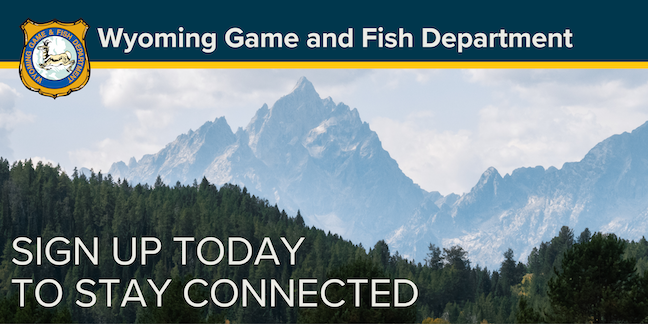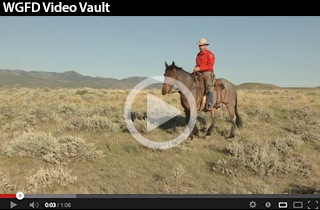VOLUNTEERS AND GRHS STUDENTS ASSIST WITH FONTENELLE FISH NETTING
Wyoming Game & Fish Department sent this bulletin at 12/04/2013 10:20 AM MST 
|
|
Having trouble viewing this email? View it as a Web page. |
VOLUNTEERS AND GRHS STUDENTS ASSIST WITH FONTENELLE FISH NETTING
GREEN RIVER—Green River fisheries biologists with the Wyoming Game and Fish Department (WGFD), along with help from community volunteers, Trout Unlimited (TU), Western Wyoming Community College (WWCC), and Green River High School (GRHS) students, picked fish from three nets set on Fontenelle Reservoir. The fish netting is an annual event used to track changes in the burbot (a.k.a. ling) population in the reservoir.
Fisheries biologists use the annual fish sampling event to monitor how burbot numbers, sizes, and diet shift over time. The fish sampling information allows the Game and Fish to respond to threats this invasive fish species poses to the sport fishery through regulation changes and fish stocking strategies.
“In addition to gathering information,” said Green River Fisheries Biologist Anna Senecal, “Sampling events like this one provide great opportunities to engage the public and relay a complex management and wildlife issues in a meaningful way. It also gives us an opportunity to hear from the anglers and their families about their experiences with Wyoming fisheries. Hopefully, it is as much a learning experience for us as is it is for them.”
GRHS Principal Darren Howard, college biology prep teacher Allison Bass, 22 students, and community volunteers rolled up their sleeves to pick invasive burbot from three nets that were set overnight. Biologists have been setting these nets in the same locations in early November since 2006, following the first discovery of burbot in Fontenelle Reservoir.
“Illegally introduced fish can have significant, long-lasting, negative impacts on desirable game fish populations,” said Green River Fisheries Supervisor Robert Keith. “Introduced fish are often aggressive predators that out-compete existing game fish populations, reducing their numbers, and increasing the costs of managing a fishery.”
GRHS students observed burbot capture methods, handled fish and recorded biological data, then discussed statistics and fish sampling design. The students were encouraged to think of ways in which the data they collected would be used in “real world” settings to better manage the fisheries they enjoy and care about. Students also participated in fish anatomy and physiology discussions at dissection stations run by Will Clark, Assistant Professor at WWCC.
“Being able to take my students out on an actual field experience opens their eyes to how what they learn in the classroom really is used to manage the Wyoming they love,” said GRHS teacher Allison Bass. “When my students are out in the field, I see them become the most inquisitive they have ever been; asking questions, getting DIRTY, and doing science without hesitation. When we come back to the classroom, they are able to find deeper connections with the curriculum because they have actually experienced wildlife management and ecology, evolution, and statistics first-hand, in their own backyard.”
“At the end of the day, everyone got to get their hands a little dirty and, ultimately, learned a thing or two,” Senecal said. “All burbot were collected for various ongoing research projects. All in all, a successful fall netting excursion.”
~WGFD~
Contact: Anna Senecal, Lucy Wold **Photos will be sent via traditional email upon request.


